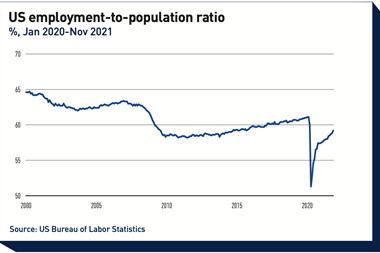Pensioenfonds Openbare Apothekers (SPOA) will increase equity risk to at least 80% for its younger members in its new flexible defined contribution (DC) arrangement. The fund believes it needs to increase of risk to continue meeting its pension ambition of 65% of the average salary including the state pension.
Members will get to choose between three lifecycles, with 80%, 90% or 100% of equity investments, when they start accruing their pension. In the standard lifecycle, 90% of assets will be invested in equities. From 20 years before pension age, this will be reduced gradually to reach 40% upon retirement.
The changes mean SPOA’s investment portfolio will be reshuffled considerably as the fund currently has an equity exposure of just 27.6%, as well as a 0.6% allocation to real estate. Almost two thirds of assets are invested in bonds.
“The members have long wanted the fund to increase risk, but this wasn’t possible because our funding ratio did not allow for it,” said SPOA president Mariëtte van de Lustgraaf.
At the end of 2021, the SPOA’s policy funding ratio – the average funding ratio over the previous 12 months – stood at 101%.
The pharmacists do not want to restructure the scheme’s portfolio all at once, and favour a gradual approach. “Our investment commission is looking at this,” van de Lustgraafsaid.
“In autumn, we will zoom in on this further together with our fiduciary manager Achmea Investment Management,” she added.
The pharmacists prefer to make the transition to the new pension system as fast as possible, preferably as of 1 January 2024. “Our current equity exposure is insufficient to meet our ambition of a pension of 65% of the average salary,” van de Lustgraaf explained.
According to the scheme’s president, an asset liability management (ALM) study showed that the fund needs an equity allocation of at least 80% if contributions remain unchanged at 30.7%.
“Young pharmacists that have no capital invested yet will benefit greatly from these lifecycles. And because the decumulation phase in the new arrangement still allows for a maximum of 40% equity exposure, pensioners have a bigger chance their pensions will be indexed,” she added.
The fund’s ALM study presumes a long-term equity risk premium of 2.5%.
Risk preference
The new pension arrangement follows a risk preference survey among members of the fund’s professional association BPOA, which acts as commissioner for the scheme.
The survey, which drew a 20% response rate, showed members want an average allocation to equities of between 72% and 80%. On average, members prefer an equity exposure of 20% at retirement.
To be able to meet the pension ambition, even the lowest-risk lifecycle invests more in equities than the average member wants. The extra risk has, however, not met much resistance among members, as 95% of them agreed to it at a special meeting earlier this month.
“The official results of the vote are not yet clear though,” added Diederik Gombert, a board member of BPOA. “We are still checking whether all votes cast are legitimate as it was a hybrid vote with most members casting online votes.”
No decision on transition
BPOA is yet to decide whether to transition accrued defined benefit (DB) rights to the new DC pension system.
“This will be discussed in the second half of this year. Making the transition to the new system would fit with our current policy, but a decision is yet to be taken,” said Gombert.
The risk preference survey also showed almost 10% of members prefers to have a 100% allocation to equities. Gombert said these risk-prone members are mostly self-employed pharmacists.
“There’s a group of members who have considerable capital outside the pension fund, granting them a higher capacity to take risk. Pharmacists on contracts are more dependent on the pension fund for their pension [than entrepreneurs] because they don’t own pharmacies they can sell at retirement,” he said.
In SPOA’s current arrangement, there are no pension accruals above a threshold of approximately €85,000. This ruling affects some 10% of BPOA’s members. In the new arrangement, this threshold will disappear.
“From then onwards, pharmacists will accrue pensions for their whole salaries as a standard,” said Gombert.
The new arrangement includes, however, the possibility for members to stop accruing pensions for salaries above 80% of the threshold for tax deductibility, which currently stands at €115,000.
The latest digital edition of IPE’s magazine is now available































No comments yet